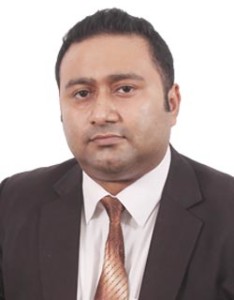After more than a year of GST, around 130 advance rulings and nine appellate orders have been pronounced by the Authority of Advance Ruling (AAR) and the Appellate Authority of Advance Ruling (AAAR) of various states. Most of these have been decided in favour of the Revenue Department – leading to the perception of a “pro-revenue trend” and creating hesitation in taxpayers and their advisers in opting for advance ruling under GST. Despite this, advance ruling continues to be a highly effective tax controversy management tool under GST, at least for tax positions which are almost certain to be disputed by the Revenue Department and for those which are in dispute between contracting parties in commercial contracts.

Partner
Advaita Legal
Where it can be predicted with reasonable certainty that a dispute will arise, advance ruling helps to cut short an otherwise long-drawn and expensive process of tax litigation under GST. If an assessee does not apply for an advance ruling and the Revenue Department differs in its interpretation with respect to the assessee’s GST liability, the litigation will commence in two to five years with a show cause notice seeking to impose GST along with interest and penalty, followed by an adjudication order. In the case of an adverse adjudication order, the assessee’s only resort would be to file an appeal to the appellate authority and then to the appellate tribunal. Given past trends, it is likely that any relief would be received by the assessee only at the appellate tribunal level.
Not only would the exposure in such cases extend to interest and penalty in addition to the GST demand (which can almost double the exposure in some cases), filing an appeal would require a deposit of up to 30% of the disputed sum of tax – capped at ₹1 billion (US$14 million) for both central and state GST. Appeals must go the appellate tribunal, where technical members outnumber the judicial member, before assessees may approach the high court and then the Supreme Court. Cases typically take at least three years to reach the high court, with heightened exposures and deposits for the assessee.
You must be a
subscribersubscribersubscribersubscriber
to read this content, please
subscribesubscribesubscribesubscribe
today.
For group subscribers, please click here to access.
Interested in group subscription? Please contact us.
你需要登录去解锁本文内容。欢迎注册账号。如果想阅读月刊所有文章,欢迎成为我们的订阅会员成为我们的订阅会员。
Sudipta Bhattacharjee is a partner and Onkar Sharma is a managing associate at Advaita Legal. Samyuktha Srinivasan, an associate, provided input.
2nd Floor, Block F, International Trade Tower
Nehru Place, New Delhi – 1110 019, India
Lodha Excelus, 1st Floor
Apollo Mills Compound, NM Joshi Marg
Mahalakshmi, Mumbai – 400 011, India
Contact details
New Delhi | Tel: +91 11 3323 2700
Mumbai | Tel: +91 22 3989 6000
Email: monalidutta@advaitalegal.com



























